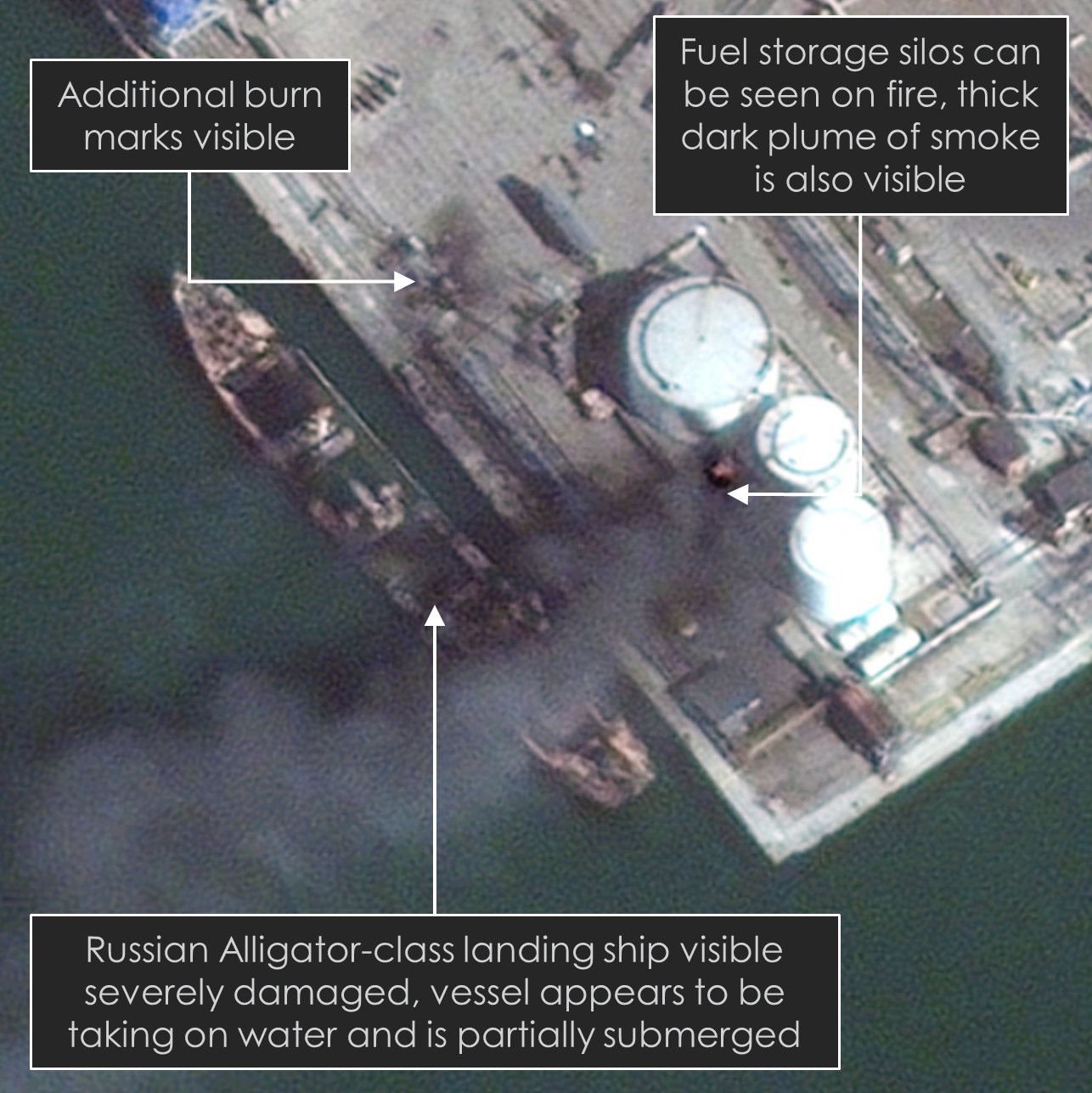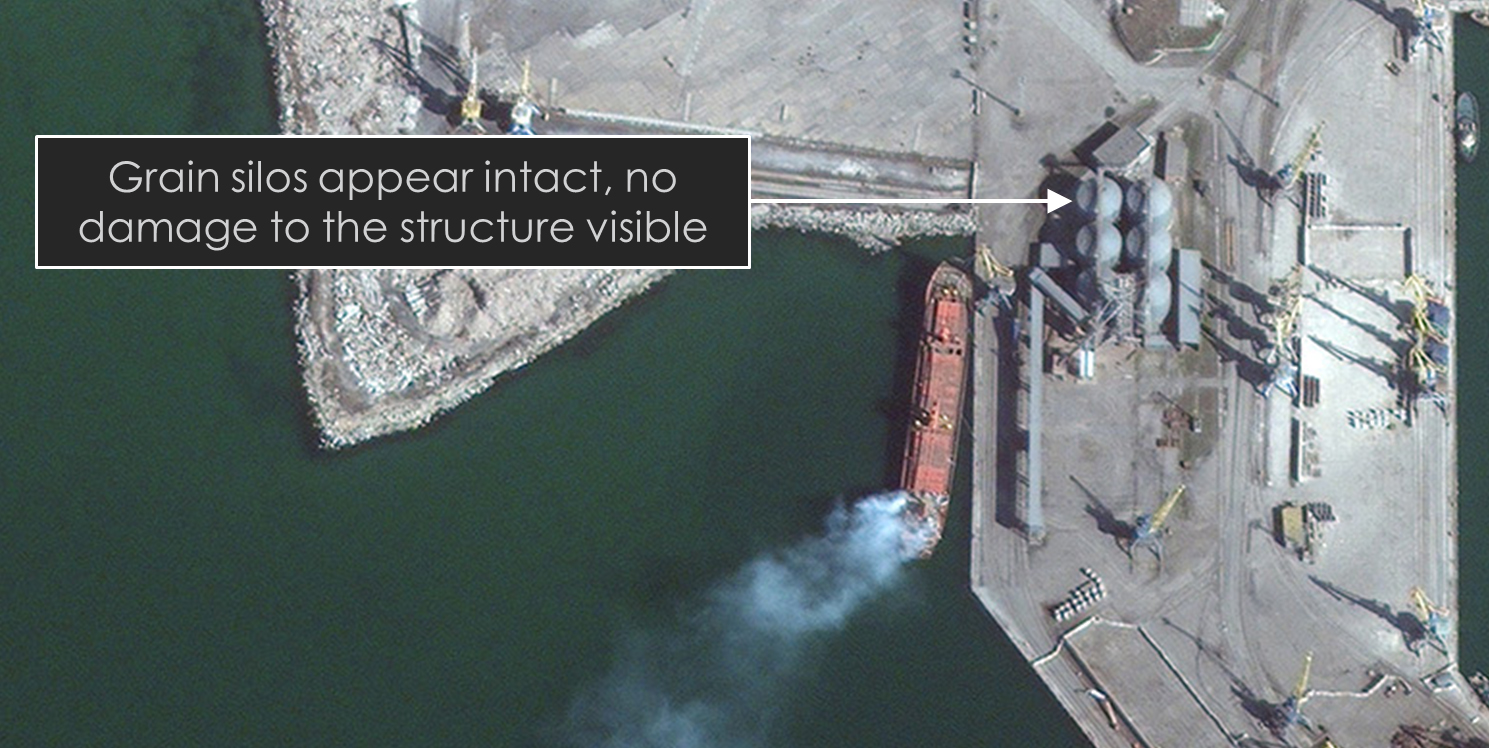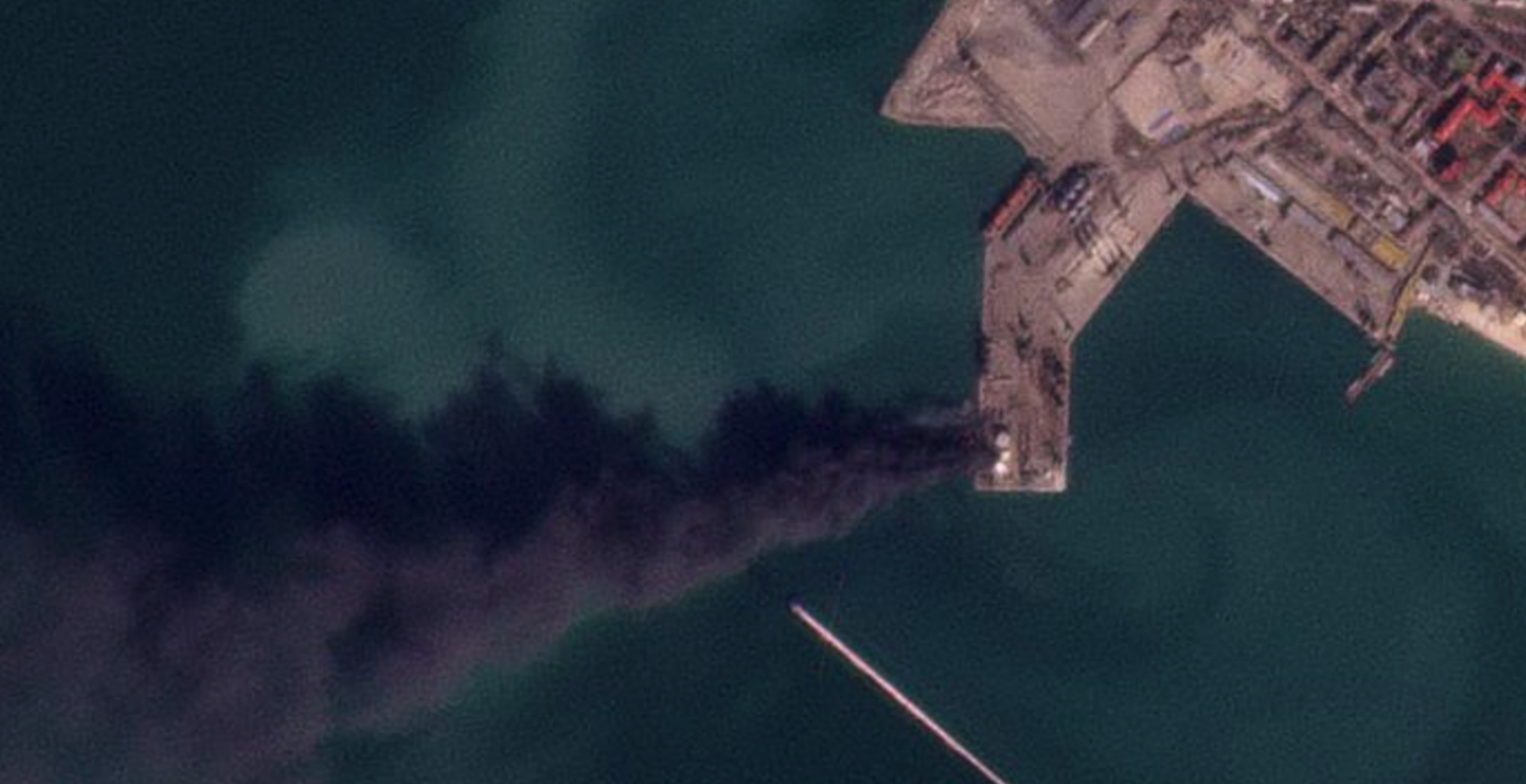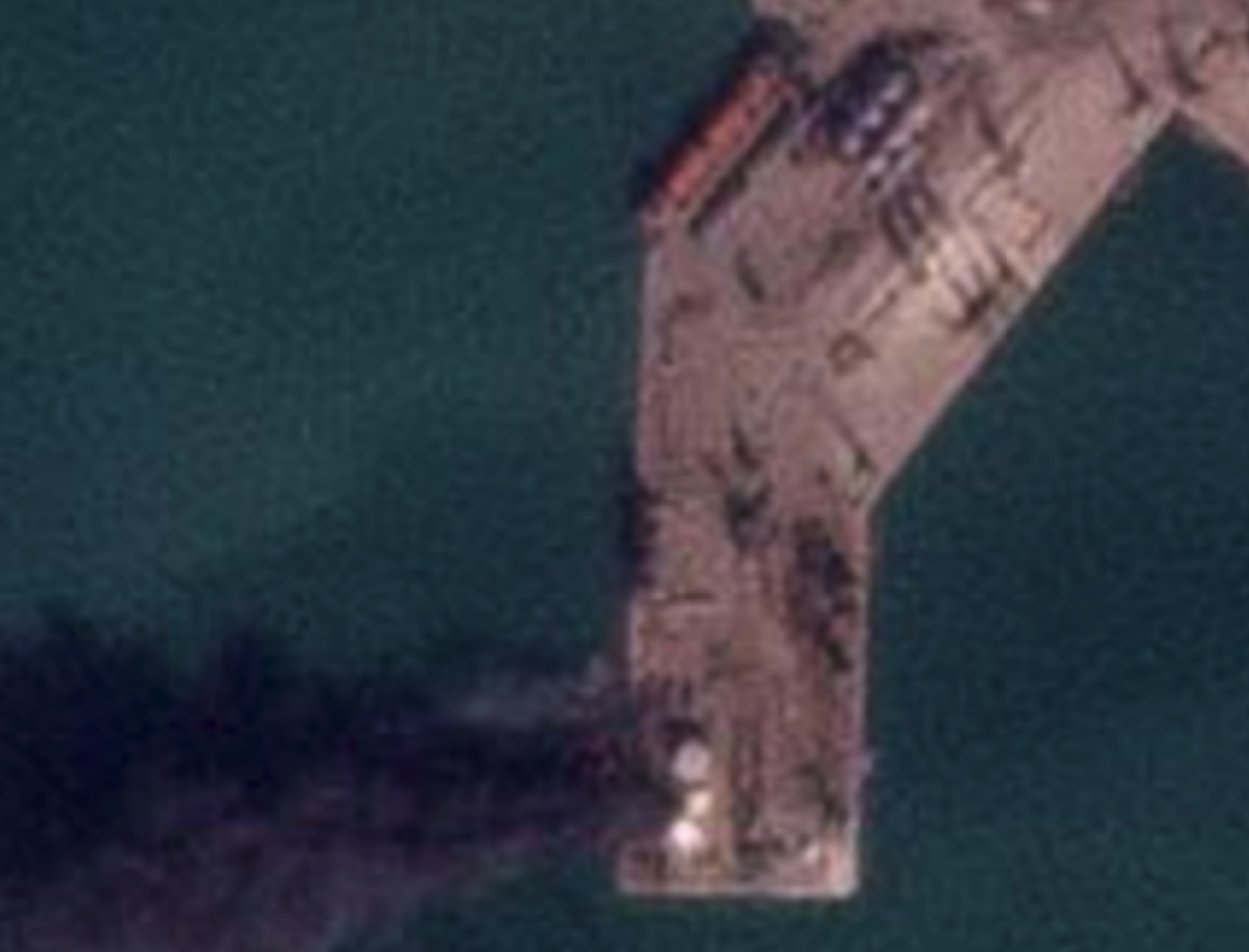A satellite image confirms that a Russian Navy amphibious warfare ship was left destroyed next to the pier where it was moored in the occupied Ukrainian port of Berdyansk on the Sea of Azov. Its demise came after it suffered multiple explosions and massive fire yesterday. Exactly what happened to the Project 1171 Alligator class landing ship Orsk remains murky, but from what we can see now it seems unlikely that Ukrainian forces targeted it with a Tochka-U short-range ballistic missile, as had been reported initially. You can read more about that and other aspects of what is known about the incident in The War Zone‘s earlier reporting here.
Commercial satellite imagery provider Maxar Technologies released the image of Berdyansk, which was taken today, and @detresfa_, an independent open-source intelligence analyst, has helped The War Zone take a more in-depth look at what it shows. With regards to Orsk itself, there are indications that it may not have fully settled and could still be taking on water a day after the incident, but the ship is a burned-out wreck now either way.
On the adjacent pier itself, a grouping of fuel tanks still appears to be on fire. There is at least some degree of additional damage to other nearby infrastructure, such as the tracks that allow cargo-handling cranes to move from one position to another. However, the four cranes in that section of the pier appear to be free from massive damage.

In addition to the sunken Orsk, another ship, which appears to be a commercial bulk cargo carrier, is seen to the immediate north with what looks to be white smoke rising from areas near its bridge and main accommodation section. It’s unclear what the extent of the damage to that vessel, which was present at the time of the incident, might be. There does not appear to be similar smoke rising from that ship in a separate, lower-resolution satellite image from Planet Labs that was shot yesterday after the initial incident. There does not appear to be any visible damage to the grain silos on the pier next to this ship, either. This smoke could be the result of secondary damage from the Orsk, which had multiple secondary explosions occurring, with what appeared to be weaponry cooking off that could have hit this ship. It could also be from the ship’s own systems.



As for exactly what happened yesterday at the port of Berdyansk, it remains unclear. The Orsk had arrived at Berdyansk in the last week or so and had been unloaded its cargo, which included BTR-82A wheeled armored vehicles, to great fanfare. This all had underscored the importance of the port to Russia’s ongoing offensives in southeastern Ukraine, especially its push to fully capture the port city of Mariupol to the north, which would help in securing a critical land bridge between western Russia and occupied Crimea.

Maxar’s satellite image certainly does not show the kind of impact zones one would expect to see if Ukrainian forces had caused the damage to the ship and surrounding infrastructure with a barrage of Tochka-U short-range ballistic missiles, as was initially reported. It is possible a single missile hit the ship, but Tochka-U is not that accurate and if that was the case, it would have been an incredibly lucky shot. Also, firing just one at the target would have been a plan with a very low chance of success. These weapons are prized by Ukrainian forces and in short supply, so it isn’t clear how using one on a hard to hit target would have made much sense, but it is possible. A more likely plan would have been to target the fuel facility in hopes that it destroys the ship and the infrastructure around it. This could have actually been the case.
None of this rules out the possibility that Ukrainian forces could have conducted smaller, more precise strikes from the air or the ground, with secondary explosions onboard Orsk, which appeared to still have at least some kind of ammunition or other explosive materiel at the time, causing additional damage. There were also unconfirmed reports yesterday that Ukraine had attacked the port using a Turkish-made TB2 armed drone and The War Zone had raised the possibility that ground forces could have employed guided anti-tank missiles, as well.
Video footage of the incident shot on the ground from multiple angles, some of which is seen below, shows what appears to be a small initial fire that then triggered a larger conflagration on Orsk. This leaves open the possibility that sabotage or even just an accident could have been to blame, again with secondary explosions causing the damage to other parts of the port.


The fate of two Project 775
Ropucha-II class landing ships, Tsesar Kunikov and Novocherkassk, which were seen fleeing the port as Orsk burned, is unclear. At least one of them was one fire at the time. Naval expert H.I. Sutton posted a separate annotated satellite image from Sentinel Hub on Twitter earlier today that he said might show these two ships headed for the Russian Navy’s base at Sevastopol on the Crimean Peninsula in the Black Sea.
No matter what, the Russian Navy’s loss of Orsk is significant. The port of Berdyansk looks to have survived whatever this incident was with at least some capacity to accept incoming ships. If what happened was an attack of some kind, it would demonstrate the Ukrainian military’s continued ability to hold this critical port at risk, at least to some degree.
Contact the author: joe@thedrive.com
